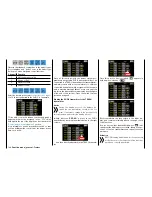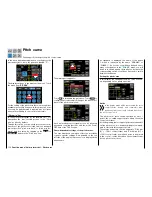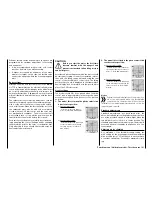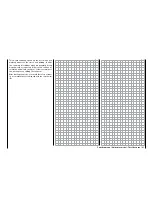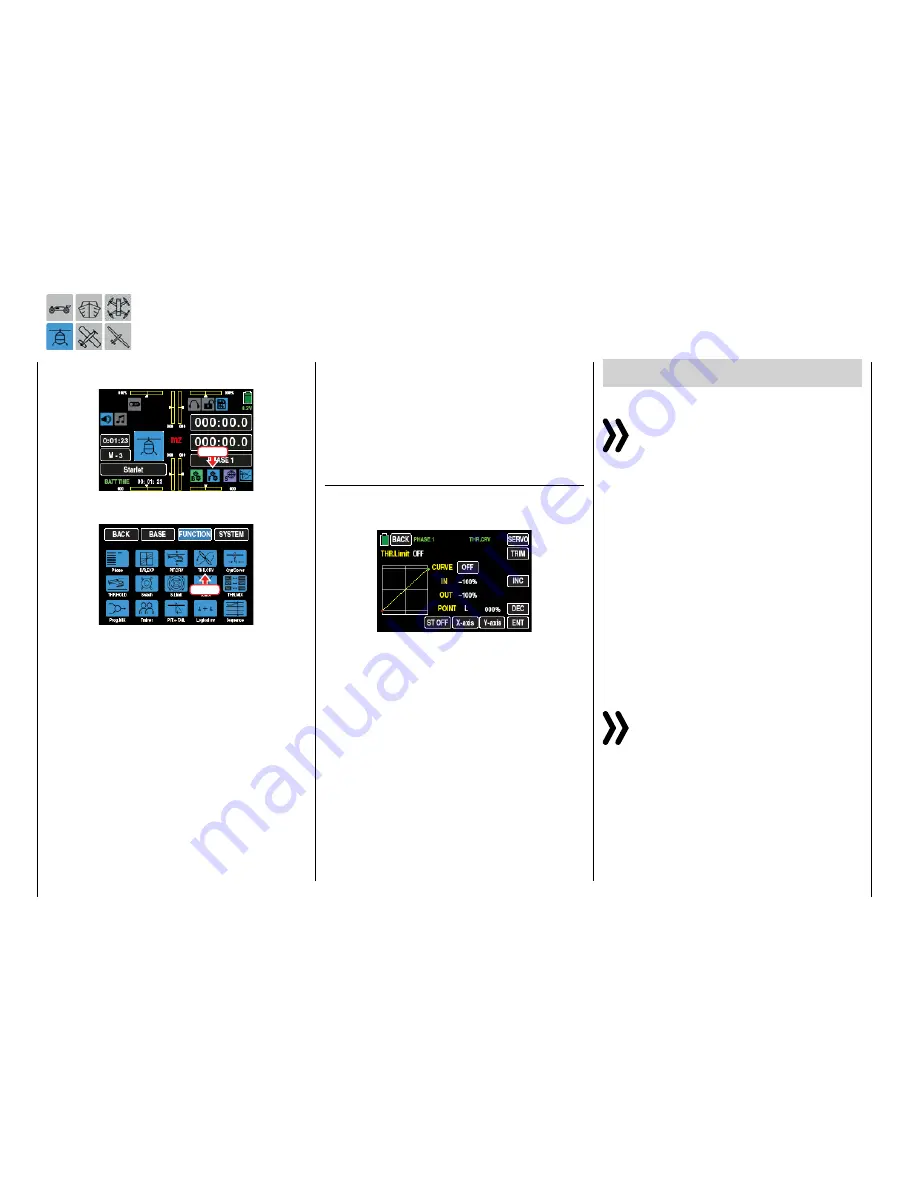
Throttle curve
Phase-specific setting of the throttle control curve
In the basic transmitter display, use your finger or the
provided stylus to touch the gear icon labeled "F":
Touch
The display switches to the blue function menu. Touch
the menu item "
THR.CRV
":
Touch
As for the setting of the pitch curve also for the throttle
curve there is a curve mixer available in every flight
phase. Also in this mixer can however only be pro-
grammed if required not linear mixer actions analog to
the control stick travels.
Phase-dependent settings of the throttle curve
The here mentioned sub-menu offers the possibility
of phase specific settings. Recognizable on the top
left side of the display in green color is displayed the
phase name. As standard is displayed the name of the
phase 1, which is indicated by the name "NORMAL"
or "PHASE 1". As soon as you will have defined one
or many other phases in the "
PHASE
" menu, you will
be able to switch among those phases. Activate the
corresponding switch or switches if desired to switch
between the phases.
Tips
• The "Throttle" setting for the autorotation phase is
described in the sub-menu "
THR.HOLD
", .
• If the "
THR.Limit
" has been activated in the menu
»
CTL Set
« through the assignation of a control, its
actual position in the line "THR:Limit" in the upper
left side of the display is displayed in numerical value.
Throttle curve
The throttle curve can be specified by up to 7 points,
the so-called support points, along the entire control
stick phase specific travel:
At the beginning, fewer support points are required
to set the throttle curve. It is, however, highly recom-
mendable to start with three support points.
These three endpoints, the two endpoints "Pitch low
(L)" = -100% control travel and "Pitch high (H)" =
+100% control travel, as well as a point to be placed
in the control, center describe a linear characteristic
for the pitch control curve.
Support points can be set, changed and deleted in
the same manner as described in the previous sec-
tion, "
PIT.CRV
". First specify the throttle curve using
three points, that is, the two end points "L" and "H",
as well as the other set point "1" in the control center
in order to harmonize the motor performance curve
with the pitch curve.
Helicopter with gas motor or electric drive with a
governor
Notice
The appropriate adjustment of the throttle curve
to a helicopter equipped with a
governor
will be
addressed below.
This setting only refers to the control curve for the
throttle servo or the
governor
.
• The control curve should be set so that the carbu-
rettor is completely open when the throttle/pitch
control stick is in end position, or the actuator of
an electric helicopter is fully enabled (with the ex-
ception of autorotation flight).
• For the hovering point which is normally in the cen-
ter of the control, the carburettor setting or perfor-
mance control of the motor control unit needs to
be coordinated with the pitch curve to produce the
desired system speed.
• At the minimum position of the throttle/pitch con-
trol stick, initially set the throttle curve so that a
gas motor runs significantly faster in comparison
to idling, and the clutch engages reliably.
Notice
Both a gas engine and electric motor are stopped
using the
THR.Limit
within the phase.
It is unnecessary to program two quick links
("with throttle preset" and "without throttle preset" to
thereby "gift" a quick link to the gas preset) which is
sometimes used in other remote control systems to
accomplish the same purpose since the system
speed can be increased below the hovering point
much more flexibly and sensitively with the
THR.Limit
included in the
mz-24
HoTT Pro transmitter than by
using a gas preset.
160
Function menu | Helicopter model - Throttle curve
Summary of Contents for mz-24 PRO
Page 13: ...13 Personal notes...
Page 19: ...19 Personal notes...
Page 37: ...37 Personal notes...
Page 59: ...Touch 59 Base menu Model selection...
Page 79: ...79 Personal notes...
Page 89: ...89 Personal notes...
Page 115: ...115 Personal notes...
Page 153: ...Helicopter model function menus Common function menus 153 Personal notes...
Page 169: ...169 Personal notes...
Page 187: ...187 Personal notes...
Page 199: ...199 Personal notes...
Page 207: ...Fixed wing model function menus System menus 207 Personal notes...
Page 211: ...211 Personal notes...
Page 219: ...219 Personal notes...
Page 237: ...237 Personal notes...
Page 238: ...238 Personal notes...
Page 239: ...239 Personal notes...

